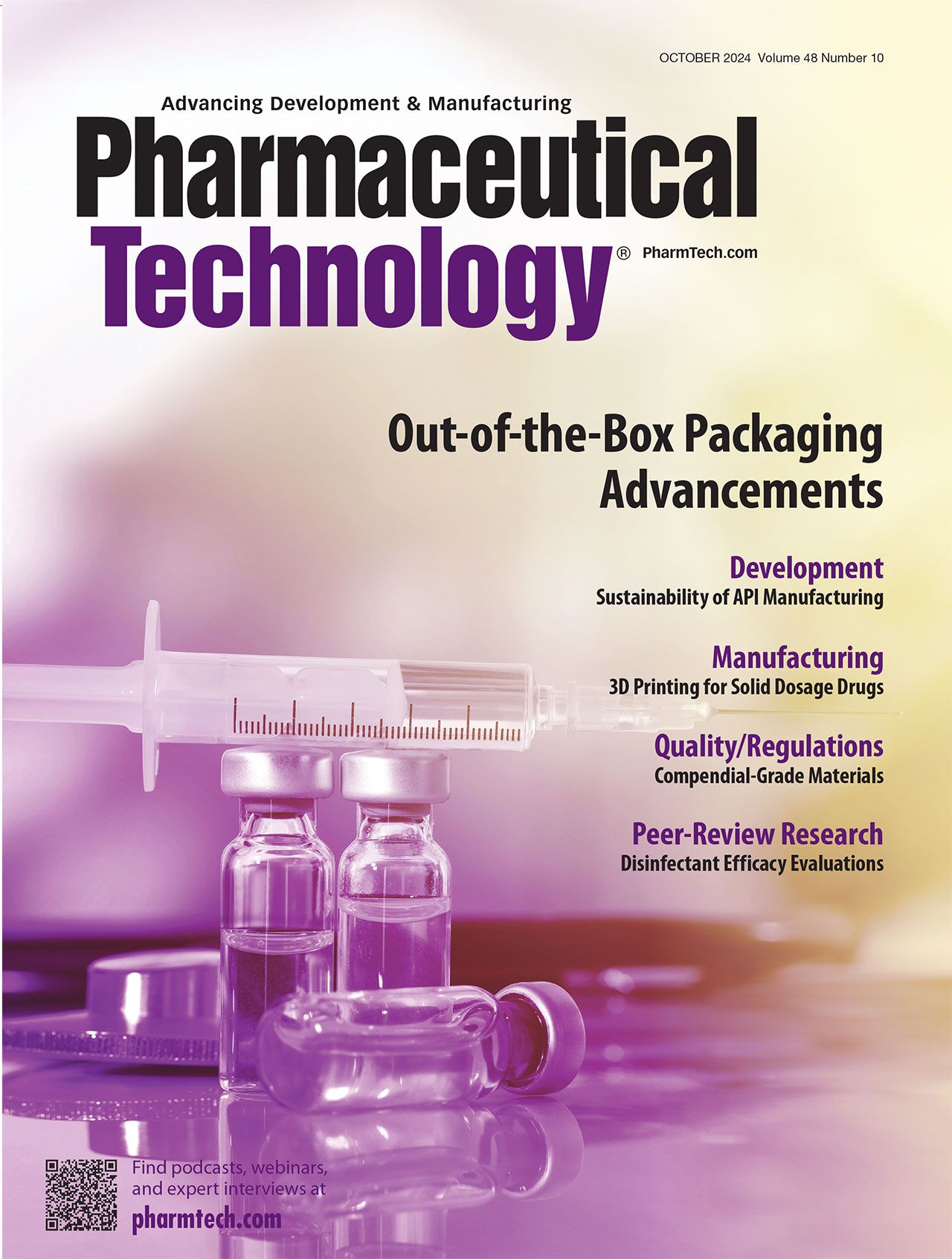A Silver-Based Disinfectant—Non-Corrosive, Non-Toxic, Sporicidal: Disinfectant Efficacy Evaluations
Various microorganisms, including molds and bacterial spores, were tested on stainless-steel coupons and demonstrated 2–6 log reductions with one-minute wet-contact times.
The microbiologist is testing the microbial contamination in the sample under vertical laminar air flow cabinet, concept of microbial laboratory in pharmaceutical industry, selective focus photograph. | Image Credit: ©Sukjai Photo - stock.adobe.com

Peer-Reviewed
Submitted: April 14, 2024
Accepted: July 9, 2024
Abstract
Previously, a silver-based disinfectant composed of a low concentration (approximately 0.015% by weight) of a suspension of silver was sporicidal with a one-minute wet-contact time. The proprietary technology, licensed by the Environmental Protection Agency, for producing the silver particles has been enhanced to produce more consistent numbers and sizes of silver particles in the active raw material. Confirmatory testing has been performed on three manufactured lots to verify the consistency of disinfectant efficacy in accordance with United States Pharmacopoeia (USP) 37–National Formulary 32. Various microorganisms, including molds and bacterial spores, were tested on stainless-steel coupons and demonstrated 2–6 log reductions with one-minute wet-contact times. These evaluations were designed to demonstrate that the enhanced disinfectant had a similar disinfectant efficacy as the previously tested product. Sterility testing suitability on the disinfectant was demonstrated according to the USP. Sterility testing on all three lots of disinfectant was satisfactory.
It was previously reported that a silver-based disinfectant composed of a low concentration (approximately 0.015% by weight) of a suspension of silver was sporicidal with a one-minute wet-contact time (1). The proprietary technology for producing the silver particles has been enhanced to produce more consistent numbers and sizes of silver particles in the active raw material. The new product is licensed by the Environmental Protection Agency (EPA) (EPA Registration Number 96194-1, 10 March 2021). Confirmatory testing has been performed on three recently manufactured lots to verify the consistency of disinfectant efficacy in accordance with the United States Pharmacopoeia (USP) 37–National Formulary 32 (2). Various microorganisms including molds and bacterial spores were tested on stainless-steel coupons and demonstrated 2-6 log reductions with one-minute wet-contact times. These evaluations were designed to demonstrate that the enhanced disinfectant had a similar disinfectant efficacy as the previously tested product. Sterility testing suitability on the disinfectant was demonstrated according to the USP (3). Sterility testing on all three lots of disinfectant was satisfactory.
The antimicrobial effects of silver (Ag) have been recognized for thousands of years. In ancient times, it was used in water containers (4) and to prevent putrefaction of liquids and foods. In 1884, silver nitrate drops were introduced as a prophylactic treatment for the eyes of newborns, to prevent infections caused by Neisseria gonorrhea transmitted from infected mothers during childbirth (5). In 1928, the “Katadyn Process” for water purification, based on the use of silver in water at low concentrations, was introduced (6).
The bactericidal efficacy of silver and its associated ions is through the strong binding with disulfide (S—S) and sulfhydryl (—SH) groups found in the proteins of microbial cell walls. Through that binding event, normal metabolic processes
of the cell are disrupted, leading to cell death (7). There is also evidence that after entering a cell the silver ions displace the hydrogen bonds between adjacent nitrogen molecules of purine and pyrimidine bases which may stabilize the DNA helix and prevent replication of the DNA and, subsequently, division of the cell (8).
Click Here to Read the Full ArticleAbout the author
John M. Lindsay (SM) ACM, is president, Aseptic Solutions, Inc.
Article details
Pharmaceutical Technology®
Vol. 48, No. 10
October 2024
Pages: 27–33
Citation
When referring to this article, please cite it as Lindsay, J. M. A Silver-Based Disinfectant—Non-Corrosive, Non-Toxic, Sporicidal: Disinfectant Efficacy Evaluations. Pharmaceutical Technology 2024 48 (10).
